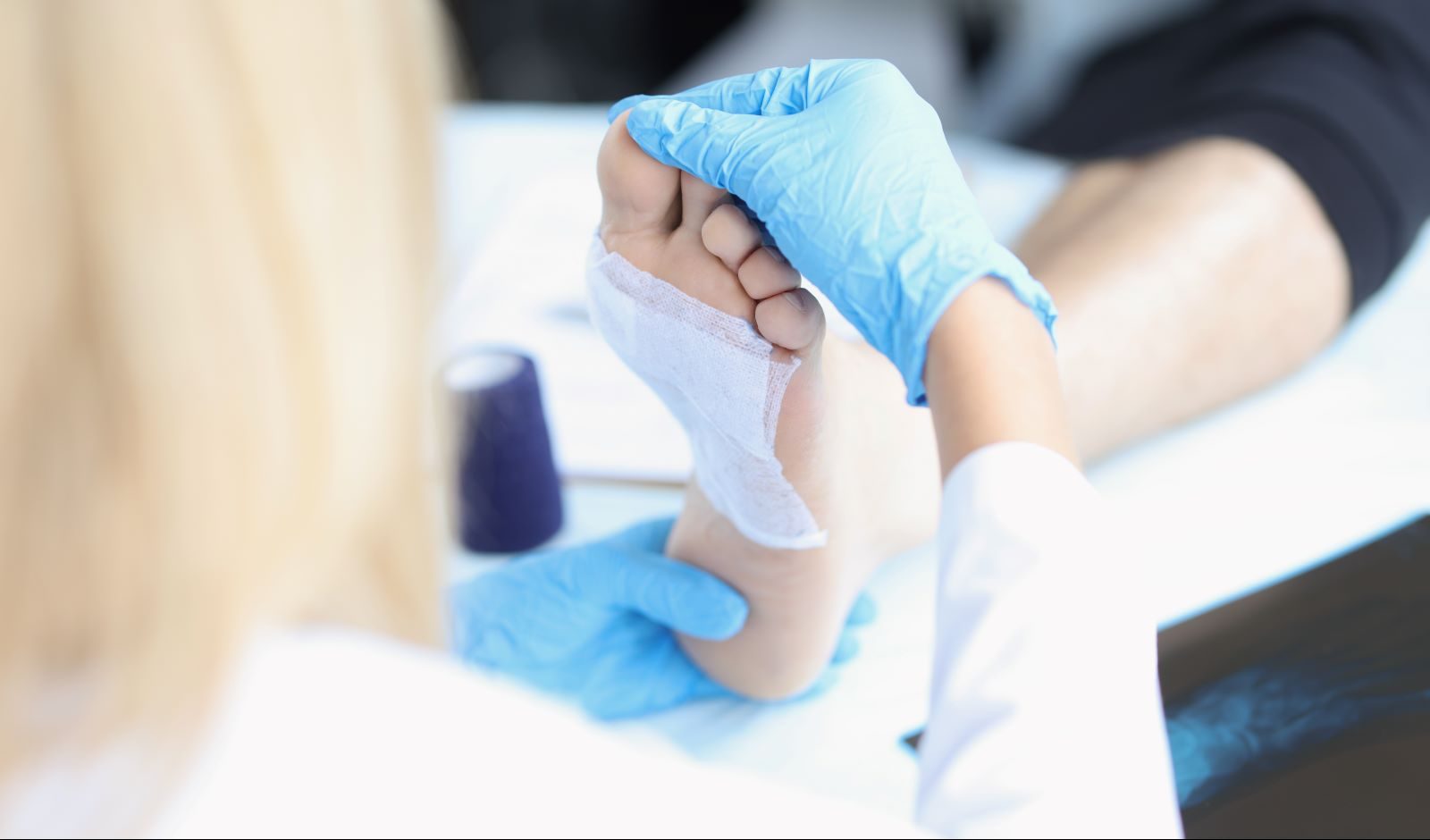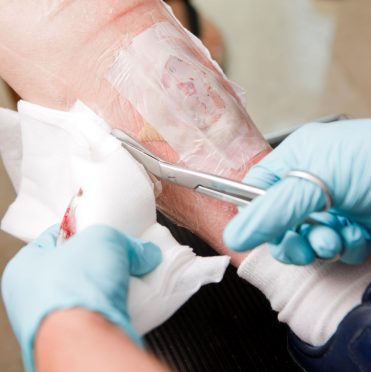Iris Mullaly thought her varicose veins were killing her.
Back in 2019, the now 72-year-old made an appointment to see Edward Gifford, MD, a vascular surgeon with Hartford HealthCare’s Heart and Vascular Institute, because she thought her varicose veins were causing her extreme pain in her ankles and feet. It had gotten so bad that Iris had difficulty walking, and couldn’t spend time gardening. She had trouble sleeping because of constant charley horses throughout the night.
“I spent 30 years as a medical assistant, so I was on my feet pretty much all the time,” she said. “I had pretty bad varicose veins, and I thought they were causing the pain.”
At their first appointment, Gifford knew the varicose veins were not the culprit. He couldn’t feel a pulse in her foot, and had to use a special machine known as a Doppler to listen for her blood flow.
He suspected her symptoms were instead the result of Peripheral Arterial Disease, in which plaque builds up in the legs’ arteries, restricting blood flow. It is primarily caused by the buildup of cholesterol plaque in the arteries, which is called atherosclerosis. An ultrasound performed during her visit confirmed the diagnosis.
Limited blood flow
Iris, who lives in Brooklyn, CT, is a smoker with high cholesterol, two of the most common risk factors for peripheral arterial disease. Unfortunately, cholesterol and aspirin medication, and counseling to eat healthier and quit smoking only alleviated some of the issue. On a follow up visit, Iris’ disease had progressed.
At first, her symptoms were limited to claudication (limping), but now, even at rest, her feet were extremely painful – a worrisome sign. The blood flow in her legs was gauged at about 50% of what it should’ve been.
“These issues can be predecessors of gangrene or non-healing wounds,” Gifford said. “It can eventually lead to a need for amputation and quick action is needed.”
The next step in Iris’ journey required a minimally invasive catheter-based procedure to clear the plaque from her leg arteries and get the blood flowing. At this point, a typically routine procedure for Gifford – inserting stents around the clogged portions of the arteries to improve flow – got tricky.
“It turns out Iris has a nickel allergy, which was discovered after she had knee replacement surgery a few years earlier, and she had a reaction. She had to have the knee replacement removed because the allergy was so severe,” Gifford said. “Almost all the stents we use in these types of procedures have nickel in them. So she had blockages in both legs, and I couldn’t use stents.”
Instead, Gifford performed an atherectomy, using a device that he inserted into each artery, inflated a balloon, and then meticulously scraped away the plaque along the artery walls. One hundred percent blood flow was restored in each leg.
“The pain,” Iris said, “was gone. I felt great.”
The need for limb preservation
But great didn’t last forever, as Iris developed a bunion on her outer right foot, near the pinky toe. “It looked atrocious,” she said. “It was horribly painful. I couldn’t wear any shoes, not even flip flops.”
Luckily, since her last experience, Hartford HealthCare launched the Limb Preservation Program in the East Region, under the direction of Dr. Gifford from vascular surgery. This program ties together multiple specialties under one umbrella. A dedicated nurse navigator assists the patient from start to finish.
Iris’ podiatrist said she needed a vascular surgeon for the toe. The first one she called couldn’t see her for four to six weeks, and she would’ve had to drive more than an hour to the appointment, so Iris called Gifford.
“Back when I first saw her, we didn’t have the Limb Preservation Program,” Gifford said. “But when she came back in 2021, we had the program. We were able to get her in right away, and with the nurse navigator she was referred immediately to (Nicole) Arcand, MD, an orthopedic surgeon who specializes in foot and ankle surgery. Creating this network of multi-disciplinary care makes it easy for the patient.”
It turned out that underneath the bunion was a bone spur, which Arcand removed during surgery. If it had gone untreated for much longer, Iris could have been at risk of losing the toe or worse.
Being seen so quickly and having her issue successfully resolved has brought Iris “back to my old self,” she said. “I have no pain. I can wear any shoe I want. Dr. Arcand was amazing – I don’t even have a scar. I can travel, I’m enjoying life. I’m very happy.”



